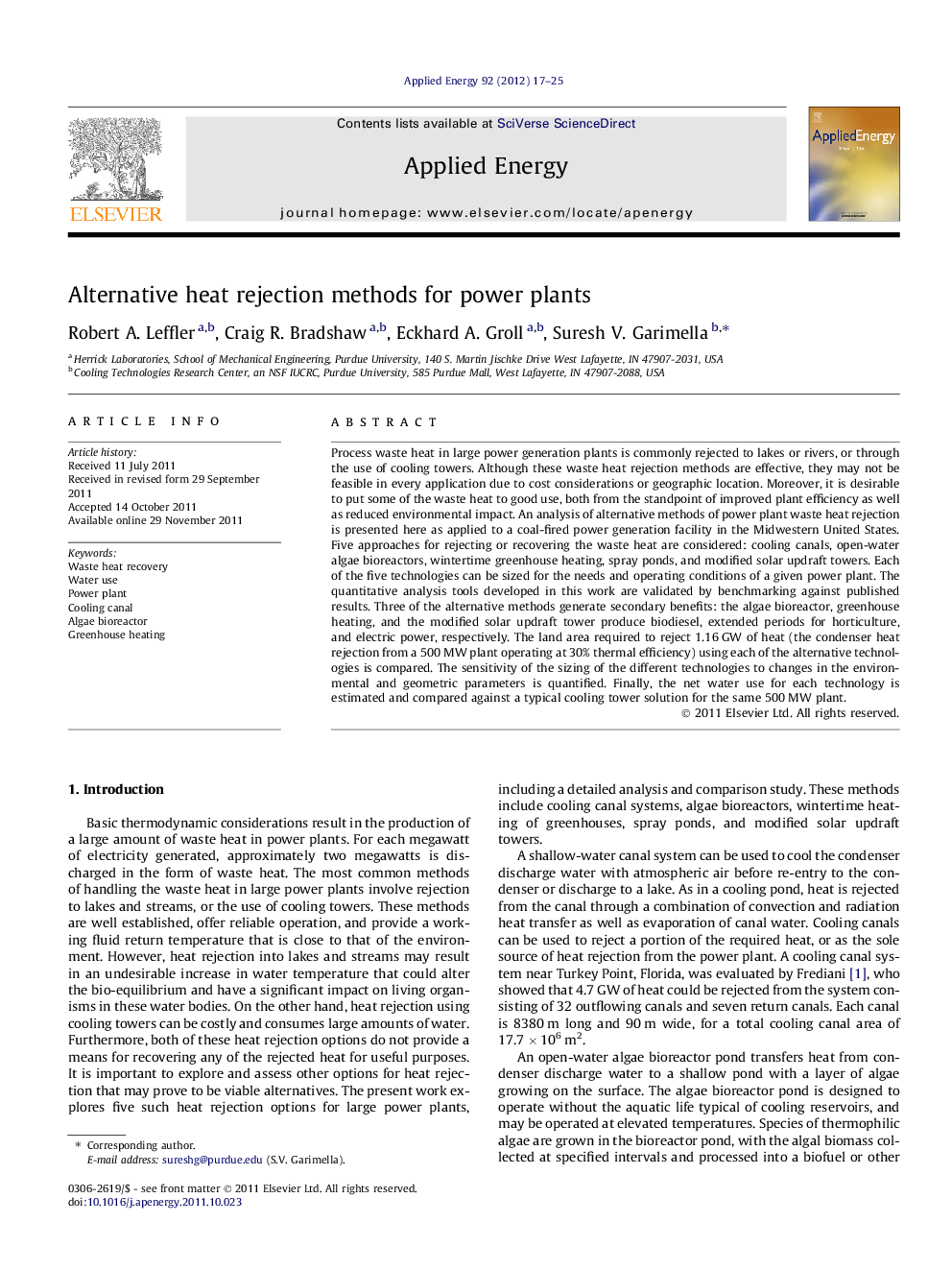| Article ID | Journal | Published Year | Pages | File Type |
|---|---|---|---|---|
| 243576 | Applied Energy | 2012 | 9 Pages |
Process waste heat in large power generation plants is commonly rejected to lakes or rivers, or through the use of cooling towers. Although these waste heat rejection methods are effective, they may not be feasible in every application due to cost considerations or geographic location. Moreover, it is desirable to put some of the waste heat to good use, both from the standpoint of improved plant efficiency as well as reduced environmental impact. An analysis of alternative methods of power plant waste heat rejection is presented here as applied to a coal-fired power generation facility in the Midwestern United States. Five approaches for rejecting or recovering the waste heat are considered: cooling canals, open-water algae bioreactors, wintertime greenhouse heating, spray ponds, and modified solar updraft towers. Each of the five technologies can be sized for the needs and operating conditions of a given power plant. The quantitative analysis tools developed in this work are validated by benchmarking against published results. Three of the alternative methods generate secondary benefits: the algae bioreactor, greenhouse heating, and the modified solar updraft tower produce biodiesel, extended periods for horticulture, and electric power, respectively. The land area required to reject 1.16 GW of heat (the condenser heat rejection from a 500 MW plant operating at 30% thermal efficiency) using each of the alternative technologies is compared. The sensitivity of the sizing of the different technologies to changes in the environmental and geometric parameters is quantified. Finally, the net water use for each technology is estimated and compared against a typical cooling tower solution for the same 500 MW plant.
► Models of five alternative methods of power plant waste heat rejection are shown. ► Comparisons of system footprint and limitations from ambient conditions are shown. ► Water use of each technology is evaluated, referencing a standard cooling tower. ► Parametric studies are presented for each technology.
